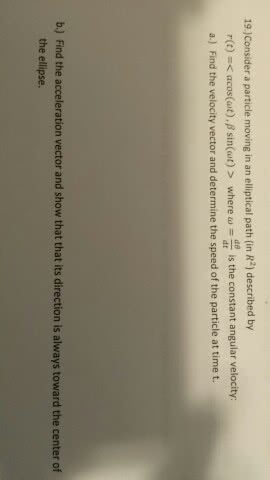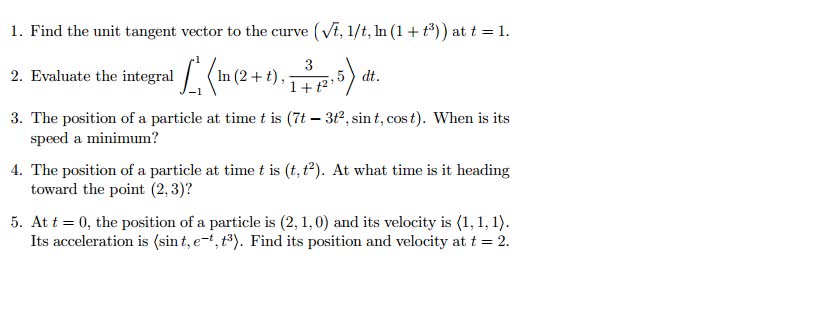MTH 101 Study Guide - Final Guide: Vector Projection
Document Summary
Spring 2021: imagine a particle moving in space with a constant speed. Show that its velocity vector must always be orthogonal to its acceleration vector: let r(t) be the position vector of a particle moving in space, and let v(t) be its velocity vector. Show that the vector (r(t) v(t)) is always perpendicular to the acceleration vector of the particle: a particle is moving along a smooth curve at a constant speed 3 units per second. Nd an (t), the normal scalar component of acceleration. r (t) = at (t)t(t) + an (t)n(t), (e) using the fact an (t) = (t)kr (t)k2,



